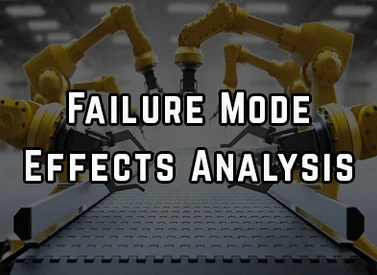PROCESS FAILURE MODE EFFECTS ANALYSIS AND CONTROL PLAN
🎤 William Levinson | 📅 May 11, 2023 | 🕒 11 AM Eastern Time US
Description:
Process failure mode effects analysis (PFMEA) is part of advanced quality planning (AQP) or advanced product quality planning (APQP), whose purpose is to plan quality into the product realization process. It seeks to anticipate trouble in advance, in the form of failure modes, failure causes (also known as failure mechanisms), and failure effects. It then seeks to implement controls that prevent generation of nonconforming product, or at least detect and stop it before it can reach an internal or external customer. It is required by the IATF 16949:2016 standard for automotive quality management systems (clause 8.3.5.2 (g)) and highly recommended for ISO 9001 users.
This is a 90-minute overview of AIAG/VDA’s newest approach to process failure mode effects analysis, with additional information on (1) the role of FMEA in advanced quality planning (AQP), and (2) the control plan that can be appended to a PFMEA to create a dynamic control plan.
(Design FMEA will not be addressed, except for its role in AQP, due to time limitations and because some manufacturing organizations do not have design in the scope of their quality management systems.)
Areas Covered in the Session :
- Role of FMEA in advanced quality planning (AQP) and its relationship to quality function deployment (QFD) and the control plan
- FMEA Basics. Foundation or master FMEAs save work and address known risks through reliance on product families and group technology, i.e. products that can be made by a common set of tools and operations. This makes it relatively easy to perform a PFMEA for new parts in the same product family.
- Seven steps of a process FMEA
- Planning and preparation
- Structure Analysis; identification of process steps (this is synergistic with a process flowchart) and process elements.
- Function Analysis. The function of the process item is what the process is supposed to accomplish. This provides the basis of the failure effect, failure mode, and failure cause.
- Failure Analysis; identification of failure causes, modes, and effects. The failure mode (how the failure happens) is the focus of the analysis. The failure cause (why it happens) was known previously as the failure mechanism.
- Risk Analysis; Severity, Occurrence, and Detection, and Action Priority. The Occurrence and Detection ratings are now based on the nature of the preventive and detection controls respectively as opposed to quantitative probability data that might be difficult to obtain. The Action Priority (which replaces the risk priority number) is based primarily on the Severity rating, followed by the Occurrence and Detection ratings. The Occurrence rating is so important that a 1 (best possible, the failure cause is totally disabled from creating the failure mode) will reduce the Action Priority to Low regardless of the Severity and Detection ratings. This reinforces the superiority of prevention over detection.
- Optimization; actions to remove or mitigate risks. These can include superior prevention and/or detection controls, as well as actions that reduce the severity rating. The result is often a lower Action Priority rating.
- Documentation (the FMEA becomes a quality record and part of organizational knowledge). It is also important to share any lessons learned with similar processes.
- Manufacturing and occupational health and safety (OH&S) examples
- Control plan; this can be appended to the PFMEA to create a dynamic control plan.
Who Should Attend:
- Quality Assurance
- Research and Development
- Manufacturing
- Production
- Engineering
- Design Engineers
- Design Assurance
- Everyone with responsibility for product realization processes. (The principles also are applicable to services, although this is not the traditional focus of PFMEA.)
Why You Should Attend:
The Automotive Industry Action Group’s (AIAG’s) and German Association of the Automotive Industry’s (VDA’s) newest manual (2019) improves significantly on the previous methods. It offers a logical, effective, and structured approach for the identification of failure modes, failure effects, and failure causes, and assessment of the effectiveness of the prevention and detection controls whose purpose is to remove or mitigate the failure causes and therefore the failure modes. In addition,
- Severity ratings now address not only poor quality (the traditional focus of FMEA) but also continuity of operations and occupational health and safety.
- Occurrence ratings are now based not on the estimated quantitative probability of failure, but rather on the nature of the prevention controls.
- Detection ratings also are based on the nature of detection controls, with automated ones including autonomation (jidoka) being better than those that rely on inspection.
- The traditional risk priority number (RPN) has the disadvantage that it is the product of three ordinal numbers. The new action priority is based on a matrix that assigns the highest weight to the severity rating and the second highest to the occurrence rating.
It is recommended that attendees’ organizations purchase a copy of the AIAG/VDA manual not only for reference but also because the complete tables (including the action priority matrix in particular) are not available elsewhere. Hard copy or electronic versions can be purchased from the Automotive Industry Action Group (aiag.org).


